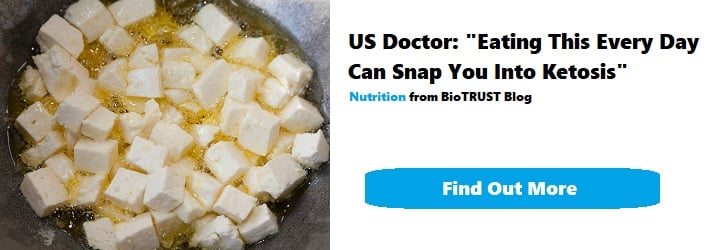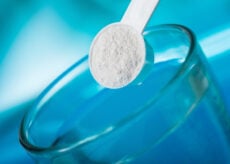7 Nutrients + 50 Foods That Help Improve Eyesight

Do you fear losing your eyesight? If so, you’re not alone. According to recent research published in the prestigious journal JAMA Ophthalmology, vision loss is Americans’ number one fear, with 88% of the 2,000 surveyed participants saying they view eye health as critical to overall health. The survey revealed that 47% of adult Americans view vision loss as having the greatest impact on day-to-day life—even worse than losing memory, losing a limb, losing the ability to talk, or losing the ability to hear!1

Even more, more Americans said losing their eyesight was the worst possible health condition that could happen to them—even worse than Alzheimer’s, cancer, AIDS/HIV, heart disease, or arthritis. All that may come as a surprise, but when you think about it, concerns about losing vision as we get older are justified by fears of what we’d lose—independence, the ability to read, the ability to properly identify medication, being able to drive, enjoying the faces of loved ones, the ability to appreciate nature and all the world has to offer, and much more.

Clearly, we need to actively take steps to protect and improve eyesight, and what we eat may have a tremendous impact on eye health and vision. Along those lines, here are the top nutrients to protect and improve eyesight and where to find them.
7 Nutrients that Improve Eyesight
Omega-3 Fatty Acids
Like pretty much every other age-related health issues, age-related vision loss is thought to arise from excessive oxidative stress and persistent unhealthy levels of inflammation. Along these lines, dietary antioxidants and nutrients that help promote healthy levels of inflammation are the nutritional weapons of choice to improve eyesight.
Along these lines, it should come as little surprise that the omega-3 fatty acids EPA and DHA, which support the body’s normal, healthy inflammatory response, are thought to be key players in protecting vision. In particular, DHA is a key fatty acid found in the retina, where it’s present in large amounts.
DHA may also contribute to eye health by promoting healthy vascularization to the macula, which is important to provide a healthy blood supply to the eye. Because of its prominence, DHA may also affect the biophysical and biochemical properties of the eye. Basically, maintaining healthy levels of DHA is very important for proper cell membrane function and for controlling what does (and doesn’t) get in and out of the eye.
The best dietary sources of DHA are oily fish and seafood, which are also sustainably caught and low in heavy metals, including the following:
- Wild salmon
- Pacific sardines
- Mussels
- Rainbow trout
- Atlantic mackerel
- Oysters
- Anchovies
- Herring
Not surprisingly, there is strong evidence that inadequate intake of omega-3 fatty acids is closely related to increased risk for age-related vision loss. On the other hand, higher intakes of fish and omega-3 fatty acids have been shown to be protective for eye health.2
Vitamin C
Considering the role antioxidants may play in protecting vision, it’s no surprise to see vitamin C on the list of nutrients to improve eyesight. Vitamin C, which is a highly effective antioxidant, protects the tissues of the eye from free radicals and reactive oxidative species that are generated during normal metabolism (and the eye has a particularly high metabolic rate) as well as through exposure to toxins, pollutants, and blue light.3
In addition, vitamin C may also be able to regenerate other antioxidants, such as vitamin E. While there’s not a clear association showing that higher intakes of vitamin C improve eyesight, there is evidence that lower levels of vitamin C are associated with an increased risk of age-related vision loss.2,3
While oranges are probably the first thing that comes to mind, there are many foods (some that may surprise you) that are good sources of vitamin C, including:
- Papaya
- Grapefruit
- Bell peppers
- Bok choy
- Broccoli
- Brussels sprouts
- Strawberries
- Pineapple
- Kiwifruit
- Cauliflower
- Dark green leafy vegetables
- Cabbage
- Tomatoes
- Cantaloupe
- Potatoes
Vitamin E
The main function of vitamin E (which actually refers to a family of 8 fat-soluble nutrients, most notably α-tocopherol) is to be an antioxidant—something it does very well. Vitamin E is a special antioxidant because it protects the fat-based walls of our cells from free radical damage (called lipid peroxidation).
This is key because fats, which are integral components of all cell membranes, are extremely vulnerable to oxidative destruction by free radicals. α-Tocopherol attacks free radicals that could threaten the retina and, ultimately, our vision. What’s more, Vitamin E is also crucial to a healthy immune system, which plays a key role in promoting a healthy inflammatory response.
Vitamin E intake has been shown to significantly reduce the risk of age-related cataracts, one of the leading causes of vision loss. What’s more, research shows that people with higher intakes of vitamin E may reduce the risk of age-related macular degeneration by up to 82% compared to folks with lower intakes.2,4
These foods are rich in vitamin E:
- Spinach
- Kale
- Mustard greens
- Collard greens
- Turnip greens
- Swiss chard
- Sunflower seeds
- Asparagus
- Almonds
- Peanuts
- Broccoli
- Bell peppers
- Tomatoes
Special Offer:Get MetaboGreens up to 20% OFF (very limited inventory)
β-Carotene
There’s a reason most of us have been told to eat carrots to improve eyesight. That reason is β-carotene (also referred to as “provitamin A), which belongs to a category of plant-based pigments called carotenoids. Like other carotenoids, β-carotene is a potent antioxidant, which can be instrumental in reducing oxidative stress and for protecting vision considering that the eye is particularly sensitive and susceptible to oxidative damage.
Along with α-carotene (bananas) and lycopene (tomatoes), β-carotene is found in the eye (in the retinal pigment epithelium and choroid specifically, if you were wondering) where it can flex its antioxidant muscles and protect against light-induced oxidative damage and locally-produced free radicals. Not surprisingly, β-carotene is frequently recommended to improve vision, and research has shown that it may be linked to a lower risk of age-related macular degeneration.5
Besides carrots, other orange-colored fruits and vegetables as well as dark leafy greens are all good sources of β-carotene, including:3
- Sweet potatoes
- Pumpkins
- Mangos
- Papayas
- Cantaloupes
- Winter squash
- Spinach
- Kale
- Red bell peppers
If you smoke—and hopefully you don’t—it’s important to note that high intakes of β-carotene (30 mg per day) may increase the risk of lung cancer in smokers. This, however, is not a concern for non-smokers.6
Zinc
Zinc is important for, well, pretty much everything considering that it’s involved in hundreds of metabolic reactions in the body. You see, zinc is an essential component of many enzymes (which play a key role in making sure said metabolic reactions get carried out). Along those lines, zinc is needed for optimal metabolism of the eye and for maintaining the health of the retina.
For example, zinc is present in the enzyme superoxide dismutase, and while that’s a mouthful, what you need to know is that this enzyme plays an important role in hunting down and neutralizing free radicals. In other words, when it comes to eye health, zinc plays important roles in antioxidant and immune function, which you already know are important if you are want to protect and even improve eyesight.3
It makes sense that zinc is highly concentrated in the eye, and research shows inadequate zinc intake is associated with poor night vision and degradation of eye structures. Additionally, studies have shown that folks with higher intakes of zinc are less likely to experience age-related vision loss.2 The best dietary sources of zinc include:
- Pumpkin seeds
- Sesame seeds
- Seafood (e.g., oysters, scallops, shrimp, crab)
- Beef
- Spinach
- Cashews
- Almonds
- Beans
- Chicken and turkey (dark meat)
- Chickpeas
- Peanuts
- Pork
- Yogurt
Lutein & Zeaxanthin
When it comes to nutrients that improve eyesight, there are arguably no heavier hitters than the carotenoids lutein and zeaxanthin. While there are more than 600 carotenoids—which are fat-soluble plant-based antioxidants found in red, yellow, orange, and dark green fruits and vegetables—only lutein and zeaxanthin are located in the macula of the eye, which is why they’re often referred to as the macular carotenoids.
Acting as primary filters of high-energy blue light, lutein and zeaxanthin support visual health and acuity by protecting against oxidative stress and inflammation. Specifically, lutein and zeaxanthin act as a “protective shield” against damaging UV rays and harmful free radicals. More simply put, lutein and zeaxanthin isomers act as “natural sunglasses.”
If you want to protect and improve eyesight, this is important because one of the biggest and fastest growing concerns relates to high-energy blue light, which is emitted from computer screens, mobile devices, tablets, televisions, and more. Yes, the same electronic devices—computer screens, mobile devices, tablets, and televisions—that many people spend over 10 HOURS in front of each day.7 Blue light affects everyone.
The good news is that lutein and zeaxanthin absorb blue light and prevent it from penetrating deep into the eye where it increases free radical production and accelerates long-term vision problems. Not surprisingly, higher intakes of lutein and zeaxanthin are associated with better eye health and vision, and on the flipside, inadequate consumption of these macular carotenoids is closely tied to an increased likelihood of vision problems (e.g., age-related macular degeneration).2,5
The best dietary sources of lutein and zeaxanthin are:8
- Spinach
- Kale
- Parsley
- Romaine lettuce
- Green peas
- Squash
- Brussels sprouts
- Pistachios
- Egg yolks
- Pumpkin
- Asparagus
- Broccoli
- Green beans
- Oranges
- Orange and red bell peppers
- Corn
- Avocados
- Tomatoes
In addition, salmon, sardines, and trout contain a rare form of zeaxanthin called meso-zeaxanthin, which may offer unique synergistic benefits to improve eyesight.9




 7 Signs Your Body is Seriously Low on Collagen (not just wrinkles)
7 Signs Your Body is Seriously Low on Collagen (not just wrinkles) Health Expert: "Turmeric Doesn't Work (unless...)"
Health Expert: "Turmeric Doesn't Work (unless...)" 3 Warning Signs Your Probiotic Supplement is a Total Waste
3 Warning Signs Your Probiotic Supplement is a Total Waste

